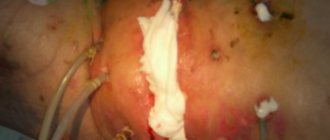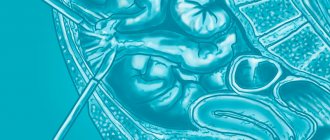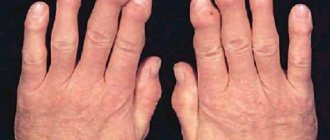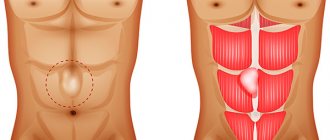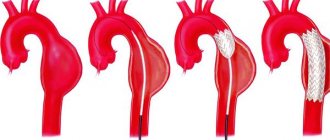Infectious disease specialist
Sinitsyn
Olga Valentinovna
33 years of experience
Highest qualification category of infectious disease doctor
Make an appointment
With the onset of hot weather, the risk of contracting typhoid fever increases. This severe infectious disease is most common in tropical and subtropical countries, especially with poor water supply and low levels of sanitation. In Russia, isolated cases of infection are recorded annually, localized mainly in the southern regions.
General information about the disease
The causative agent of typhoid fever is the bacterium Salmonella typhi. The infection is transmitted from person to person through water, food or contact with contaminated surfaces. With strict adherence to personal hygiene rules, the risk of infection is minimized.
The infection affects the lymphatic system and digestive tract, spreading throughout the body through blood and lymph. Thanks to the presence of flagella, the bacterium actively moves within the intestine and penetrates through its walls into the blood vessels.
Typhoid bacillus can persist outside the human body for a long time. It does not encapsulate and does not leave spores, but when exposed to an unfavorable environment, it transforms into the cell-free L-form, which increases the resistance of the microorganism to drugs. However, it quickly dies when boiled and upon contact with antiseptics - alcohol, chlorine-containing substances and alkalis. At low temperatures, the bacterium can remain viable for several months.
What is a serological test for typhoid fever?
Most serological methods are always based on the combination of the antigen under study and the antibodies themselves produced in the patient’s body. The serological reaction to typhoid fever is called the Vidal reaction. The value of this method is that antibodies increase at all subsequent stages of the disease. To eliminate errors, some laboratories perform a reaction abbreviated as RPGA.
It should be noted that it is a serological test for typhoid fever that makes it possible to clarify a certain diagnosis, confirm or completely refute it, and also understand how the infection occurred.
Microbes enter the human body at the initial stage. And at this stage the bacteriological method will not help in any way. The serological technique is popular; it does not pose any difficulty for either medical personnel or patients. Blood is taken from a vein at a rapid pace. By increasing the number of antibodies, it is clear what stage the disease is. Antibodies can also appear after vaccination. They remain in the blood for a long time after a vaccine or infection.
Usually the result is given in a few days. The level of IgM depends on the infection itself; IgG remains in the body for a long time. Both indicators help determine the stage of the disease. It is always advisable to donate blood at the beginning of the disease, as well as during prevention. In our medical center you can get examined without a referral or queues. The clinic is equipped with modern equipment that allows conducting a wide variety of tests. If you need to undergo an examination for a medical record, with us you can take all the necessary tests and get advice from specialists.
How does infection occur?
The main cause of typhoid fever is the penetration of infection into the human body through the oral cavity. Most often this happens when:
- drinking unboiled water containing the bacteria Salmonella typhi;
- swimming in a contaminated body of water;
- consumption of food products containing pathogenic bacteria - milk and dairy products, jelly, poorly fried minced meat, unwashed vegetables and fruits;
- contact with surfaces on which particles of saliva, urine or feces of an infected person remain.
Sometimes the infection is transmitted by flies, which on their legs transfer bacteria from the patient’s feces to food. There are known cases of mother infecting a child through breast milk. The source of infection is always a person - a patient in the acute phase, during an exacerbation, or a carrier of the bacteria. The release of bacteria into the external environment begins already on the seventh day after infection.
References
1. Bogomolov, B.P. Infectious diseases: Textbook for students of medical universities / M.: Moscow State University Publishing House, 2009. 2. Clinical recommendations (treatment protocol) for providing medical care to children with typhoid fever. FSBI NIIDI FMBA of Russia M.: 2015. - P. 85.
3. Andrews, J., Ryan, E. Diagnostics for invasive Salmonella infections: Current challenges and future directions / Vaccine. 2015. - P. 8-15. doi:10.1016/j.vaccine.2015.02.030. 4. Crump, J, Sjölund-Karlsson, M, Gordon, [et al.]. Epidemiology, Clinical Presentation, Laboratory Diagnosis, Antimicrobial Resistance, and Antimicrobial Management of Invasive Salmonella Infections / Clinical Microbiology Reviews. 2015. - Vol. 28(4). — P. 901-937. doi: 10.1128/CMR.00002-15. 5. Heiman, F, Horby, P, Woodall, J. Atlas of Human Infectious Diseases / First Edition // Blackwell Publishing Ltd, 2012.
How to recognize an infection
The course of the disease includes four periods, each of which has its own characteristic features. Symptoms of typhoid fever are different for each phase of the disease.
- Incubation phase. It is characterized by a gradual increase in symptoms, which is expressed in general weakness, a gradual increase in temperature from physiological to 40 ° C, chills, headache, loose stools, decreased blood pressure and slowed pulse. At this stage, the signs of typhoid fever can easily be confused with influenza and other respiratory infections. A characteristic feature is a white coated tongue with teeth marks along the edges. The duration of the initial stage is 1-2 weeks.
- Acute phase. The temperature reaches a maximum and fluctuates in waves throughout the day or remains unchanged. Toxins from dying bacteria affect the nervous system, causing severe headaches, insomnia and lethargy. A characteristic red rash appears on the skin of the abdomen, sides and back. Inflammation of the intestinal tissue causes severe pain in the patient. This period lasts about 1.5-2 weeks.
- Resolution of the disease. The patient feels some relief: the temperature drops slightly, headaches decrease, sleep normalizes, and appetite appears. The improvement in well-being is explained by a decrease in intoxication of the body. The resolution period lasts about a week, after which a short-term return of the acute phase is possible.
- Recovery. Within about 2 weeks, the patient feels weak, inflammatory processes decrease, and the functions of the affected internal organs are restored.
Due to the widespread use of antibiotics, the clinical picture is often blurred and insignificant. Early diagnosis of typhoid fever is most complicated, since the incubation period in many patients is asymptomatic. In approximately 2/3 of cases, exacerbation occurs suddenly or with a very short prodromal period.
Are you experiencing symptoms of typhoid fever?
Only a doctor can accurately diagnose the disease. Don't delay your consultation - call
Typhoid fever
Ulcer
Vomit
Diarrhea
17938 January 21
IMPORTANT!
The information in this section cannot be used for self-diagnosis and self-treatment.
In case of pain or other exacerbation of the disease, diagnostic tests should be prescribed only by the attending physician. To make a diagnosis and properly prescribe treatment, you should contact your doctor. Typhoid fever: causes, symptoms, diagnosis and treatment methods.
Definition
Typhoid fever is an acute infectious disease manifested by fever and symptoms of intoxication.
Its causative agents are the bacteria Salmonella Typhi
, which are found in water, meat and dairy products. In the human body, bacteria begin to secrete endotoxin, which causes symptoms of the disease.
Bacteria are extremely resistant to unfavorable environmental factors and sudden temperature changes, but they die when boiled.
Causes of typhoid fever
Sources of infection are most often sick people or carriers of bacteria.
The transmission mechanism is fecal-oral, the pathogen is released into the environment with urine and feces; often the bacteria remain on poorly washed hands and enter the mouth through food.
Rarely and mainly among children, the disease can spread through contact and household contact - through dishes and hygiene items. A significant role in the spread of typhoid fever is played by flies, which carry microparticles of feces on their legs, so the peak incidence occurs in the summer-autumn period.
Typhoid fever is found everywhere, but it is most common in countries with poor sanitation and hygiene, in overpopulated cities with no access to clean drinking water.
Classification of the disease
There are three forms of the disease:
- Typical course. It is characterized by a slowly increasing fever, severe symptoms of intoxication, and typical lesions of the gastrointestinal tract and skin.
- Atypical course:
- erased form (the disease is milder, fever may be absent, symptoms of damage to the gastrointestinal tract are mild);
- asymptomatic form (there are no symptoms at all, but specific antibodies are detected in the blood);
- carriage of Salmonella Typhi
.
- Rare forms (pneumotyphoid, meningotif, nephrotyphoid, colotyphoid, appendicotyphoid, cholangiotyphoid, typhoid gastroenteritis).
The typical form of typhoid fever varies in severity:
mild, moderate and severe.
According to the nature of the flow, they are distinguished:
- Cyclic typhoid fever (the most common variant) is characterized by cyclical pathological changes in the intestines for an average of 6 weeks. The cycle goes through stages from the gradual formation of ulcers on the intestinal mucosa to their complete healing and recovery of the patient.
- Recurrent typhoid fever (occurs in 10–15% of cases) - characterized by the resumption of symptoms after a period of normalization of temperature for at least 14 days. On average, up to 5 relapses are observed, but they are milder than the first manifestation of the disease.
Based on the presence of complications, a distinction is made between
complicated and uncomplicated typhoid fever.
Symptoms of typhoid fever
Symptoms of typhoid fever usually develop 1-2 weeks after a person becomes infected with Salmonella typhi
.
In the typical course of the disease, there is an initial period that lasts about a week and is characterized by daily increasing fever (body temperature up to 40–40.5 ° C) and symptoms of intoxication.
Symptoms of intoxication include headache, weakness and fatigue, muscle pain, sweating, loss of appetite and weight, and sleep disturbances.
In some cases, there is a decrease in blood pressure, a dry cough, pain in the lower abdomen and constipation.
At the height of the disease, patients complain of lethargy, drowsiness, and stupor. Characteristic symptoms are pale skin and puffiness of the face.
Damage to the gastrointestinal tract is manifested by a white coating and swelling of the tongue. There is a characteristic rumbling, pain, bloating in the abdomen, the stool becomes liquid and greenish.
On the 8th–10th day of illness, a reddish rash appears on the skin of the chest, abdomen, and less often on the extremities.
The acute stage of the disease lasts about 1–2 weeks.
During the recovery period, the patient's appetite returns and sleep normalizes. However, pronounced weakness and emotional instability remain. Low-grade body temperature (not higher than 37.5°C) may persist for a long time.
Diagnosis of typhoid fever
Establishing a diagnosis begins with examining the patient, collecting complaints, medical history, mandatory recording of previous trips, contacts with sick people, and consumption of contaminated food.
To confirm the diagnosis, the doctor will prescribe laboratory and instrumental examination methods:
- Clinical blood test with a detailed leukocyte formula (helps to identify inflammatory changes).
Diagnosis methods
The most reliable methods for diagnosing typhoid fever today are laboratory tests.
- Agglutination reaction to detect antibodies to the Salmonella typhi antigen. This test is carried out two weeks after infection. Its disadvantage is the possibility of a false positive result if another Salmonella bacterium is present in the body.
- Indirect hemagglutination. The test can detect typhoid fever during the first week of illness.
- ELISA. This method is highly accurate and allows you to determine the presence of any antibodies to bacterial antigens. Its advantage is the ability to conduct the test at all stages of the disease, including during the recovery period.
For general clinical and bacteriological studies, samples of the patient’s blood, feces and urine are taken. During the last phase of the disease, duodenal intubation is performed, during which a sample of the contents of the duodenum is taken.
Differential diagnosis of the disease
The symptoms of typhoid fever are in many ways similar to other infectious diseases. And it is very important to distinguish it in a timely manner from influenza, meningococcus, brucellosis and rash type.
- only in a third of cases the disease begins acutely;
- sleep is disturbed, weakness appears, as well as pain in the head;
- the reaction is inhibited;
- the skin turns pale;
- intoxication develops very slowly;
- the temperature does not rise quickly either, people do not sweat;
- heart rate slows down;
- blood pressure decreases, a wet cough appears;
- Abdominal bloating and rumbling occur.
The first symptoms of possible typhoid fever have begun to appear; it is very important to conduct a specific examination in the laboratory to distinguish typhoid fever from the so-called paratyphoid fever, etc.
Sign up
Diagnostics of the abdominal type consists of general clinical methods, as well as specific reactions. Serological testing for typhoid fever is widely used. As a result, it becomes possible to understand the severity of the disease, as well as identify the characteristics of the bacterium and its sensitivity to antibacterial drugs. The necessary tests are carried out at the very beginning of the disease and before leaving the hospital. If necessary, the test is repeated many times.
It is very important to conduct a specific examination in the laboratory to distinguish typhoid fever from the so-called paratyphoid fever.
Characteristics of examination methods
Many people are interested in where they can get tested at the slightest suspicion of an illness. In our center you can undergo an examination, as we have our own multidisciplinary laboratory. It should be noted that with non-specific studies, the result will be obtained within 1 day, and with a specific reaction it may take 5 days.
Identification of the pathogen is important not only for patients, but also for carriers. All research results are entered into the sanitary book. This diagnosis is mandatory for people who are employed in the food industry or work with children.
To conduct tests, the following is taken for analysis from a sick person or potential carrier:
- urine and feces;
- blood;
- bile.
In each specific case, the doctor individually determines which biological environment should be tested. And you need to understand that actions must be quick, since if antibiotics were prescribed, then the effectiveness of diagnosis may be reduced. All fluids from a person should be taken before therapy begins.
General clinical diagnostic methods
They include the most common procedures, which include donating urine and blood. Any changes identified will show a clearer picture and are very important. Typically, the following changes are observed in the general analysis:
- leukocytosis occurs at the very beginning of the onset of the disease;
- lymphocytosis appears, as well as thrombocytopenia;
- in severe cases, even pancytopenia may appear (when blood sprouts are inhibited);
- During recovery, the appearance of eosinophils can be called a good indicator.
If we evaluate the urine analysis, we can say that the changes in it will be traditional. This is an increase in white blood cells, as well as red blood cells. If a coprogram is performed, red blood cells are sometimes detected in the stool, which indicate that there is minor bleeding in the intestines. Under certain circumstances, doctors consider it necessary to conduct a test for occult blood so that mistakes can be completely avoided and timely determined whether there is bleeding.
Biochemical indicators are important solely for the purpose of determining the dysfunction of some organs. Sometimes patients develop pyelonephritis and hepatitis may appear.
Specific methods
The final diagnosis can only be made on the basis of microbiological diagnostics. If the examination is carried out for a health record, then a record of the absence of infection will become permission to work. Specific types include: bacteriological examination and serological.
Bacteriological method
This option assumes that biological material is taken from the patient for culture. More often it is bile. Morphological characteristics, biochemical and others are studied. An antibiotic sensitivity test must be carried out, without which it will be difficult to prescribe antimicrobial therapy.
If we talk about a blood test, it should be carried out in the very first days after the onset of the disease. A positive result will confirm the diagnosis. When such salmonella is detected in the stool, this can indicate both carriage and disease. This is why it is important to undergo additional examination.
How to cure
Since the infection is extremely virulent, and the disease is severe and often complicated, treatment of typhoid fever must be carried out in the infectious diseases department of the hospital, in conditions of complete isolation. During illness, the patient remains in bed and does not leave the infectious disease ward. Therapy continues until the patient's body temperature returns to normal for ten consecutive days and includes:
- taking antibiotics (orally or by injection);
- replacement of fluid losses (orally or intravenously);
- a gentle diet with a high content of protein products;
- in case of intestinal perforation - surgical removal of a section of intestine with multiple injuries or closure of a single perforation with drainage of the peritoneum.
Taking antibacterial drugs continues for several months. Constant monitoring of patients' condition allows for timely detection of complications and prevention of their development. After discharge from the hospital, the patient is monitored at the dispensary for a certain time.
Symptoms of typhoid fever depending on the stages
The latent period of the disease is 7-25 days, then a gradual increase in symptoms begins. The main signs of typhoid fever:
- infectious intoxication;
- roseola-like rashes on the skin in the abdomen, sides of the chest, inner surfaces of the shoulders;
- enlarged spleen and liver;
- inflammation of the small intestine and constipation;
- typhoid bronchitis;
- inflammatory process in the intestinal lymph nodes.
Symptoms of the disease increase depending on the stages:
- At the initial stage, the patient experiences weakness, loss of appetite, fever, and clouded consciousness. Then a cough, bloating, and diarrhea appear. The doctor may detect an enlarged spleen and liver, pain in the abdomen when pressed, a brown coating on the tongue, and redness of the oropharynx.
- At the peak of the disease, a rash appears; in rare cases, the palms and soles may acquire a yellowish tint. The febrile state and signs of toxin poisoning reach the limit of severity, hallucinations are possible. The heart beats slower, and wheezing is heard in the lungs. The phase lasts 1.5 weeks.
- At the final stage, the symptoms fade: intoxication is alleviated, consciousness returns, the temperature normalizes, the liver and spleen shrink.
Fever "according to Shakespeare"
The era of migration of peoples and medieval medicine brought practically nothing to the fight against typhus. For a long time, the disease received the abstract name “fever”, mixing with a dozen similar diseases, including typhus. There are no detailed descriptions of large-scale epidemics, no dated burials... But typhus has not gone away, and the stories of any long-term concentrations of people in one place persistently remind us of it. This is especially clearly seen in the examples of famous siege battles.
The apogee of all medieval wars was the Hundred Years' War between England and France, and its most striking event was the Battle of Agincourt. We will find traces of our pathogen if we turn to one of the sieges that preceded this battle. We are talking about the siege of Harfleur in Normandy, literally a stone's throw from Agincourt. The campaign and siege was led by Henry V, the same prince, playmaker and friend of Falstaff from the works of Shakespeare.
In August 1415, an army of eight thousand besieged the port of Harfleur with a garrison of one hundred people. The city surrendered in September of the same year, but several thousand people and horses stood in one place for more than a month. During this time, Henry lost a quarter of his army: the cause was bloody diarrhea and fever. All military units conducting sieges in both Antiquity and the Middle Ages were faced with this invariable trinity of problems: cholera, dysentery and typhoid, or, in medieval parlance, fever, diarrhea and rash. It does not matter whose army it was: Edward III during the siege of Calais in 1346 or the Crusaders in 1097 near Antioch (Riley-Smith, 2003).
But the siege of Harfleur is not an accidental example. Henry’s army was largely reduced by the rational actions of the besieged, and not at all by an epidemiological accident. As the troops approached the city, the townspeople opened the floodgates of a nearby dam, flooding the surrounding fields. The siege in the flooded area cost Henry almost his entire company: the disease took even such high-ranking people as Richard Courtenay, Bishop of Norwich, and at least fifteen hundred sick soldiers had to be sent home (Curry, 2015; Prestwich, 1996; Sumption, 1990).
What was the lesson of this siege that was never learned? The main way typhus spreads is oral-fecal. Dirty water or vegetables fertilized with sewage are a sure way to trigger an epidemic.
But to fight the disease, you must first make a diagnosis. To do this, it is necessary to separate all similar diseases and pathogens and create a unified concept of the disease, within the framework of which it will be possible to study its pathogenesis and search for drugs.
But another 250 years would pass before, in 1659, the English doctor Thomas Willis, one of the founders of the Royal Society of London, accurately described typhoid fever, based solely on clinical observations of his patients. And thus he will lay the next stone, after Thucydides, in the scientific foundation of understanding the disease (Emmeluth, 2004).

